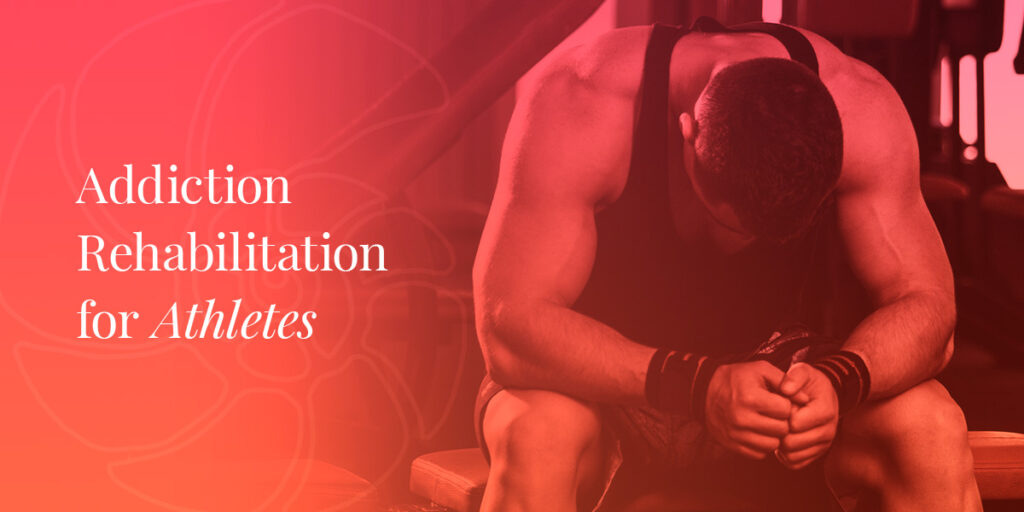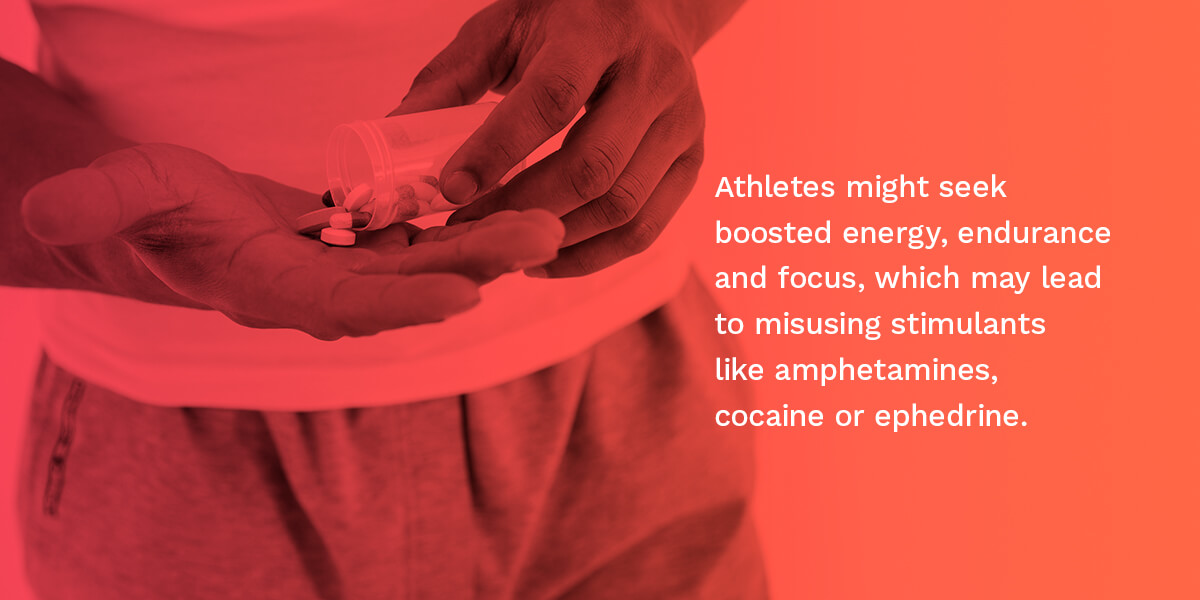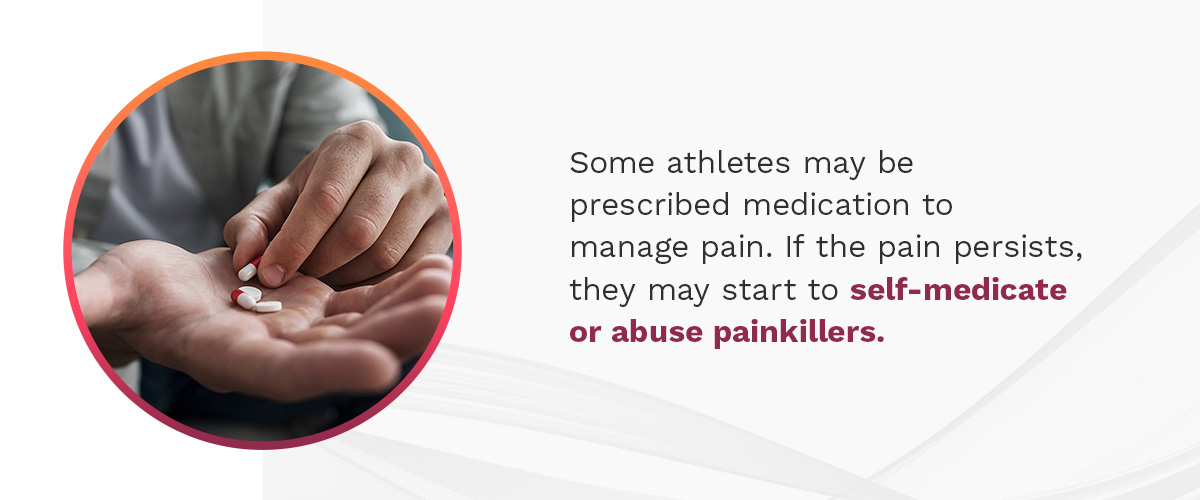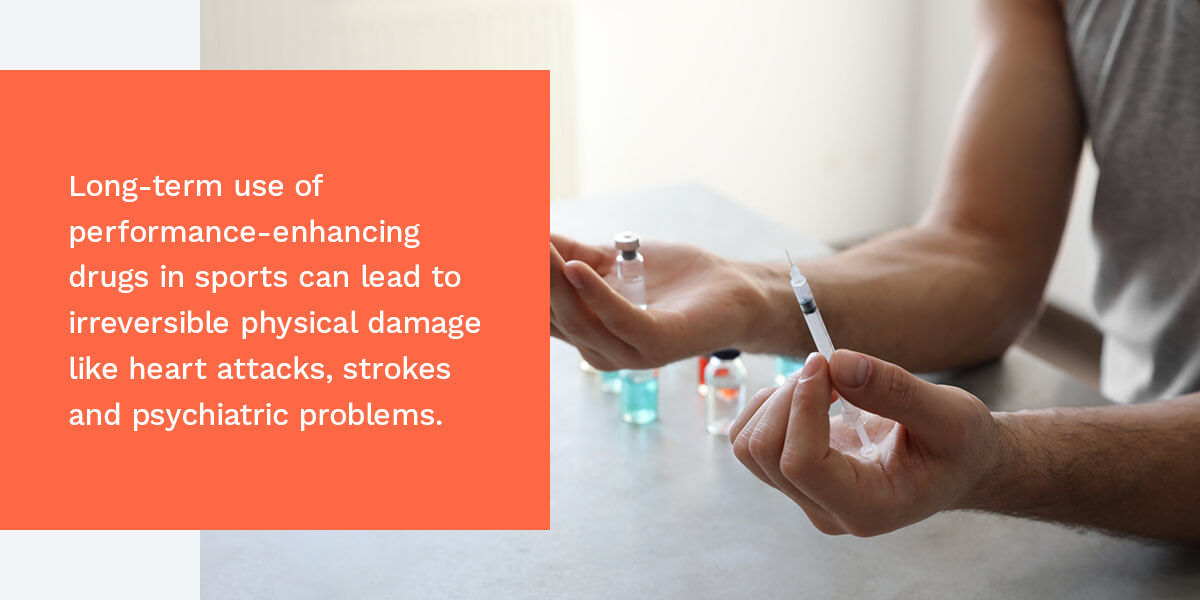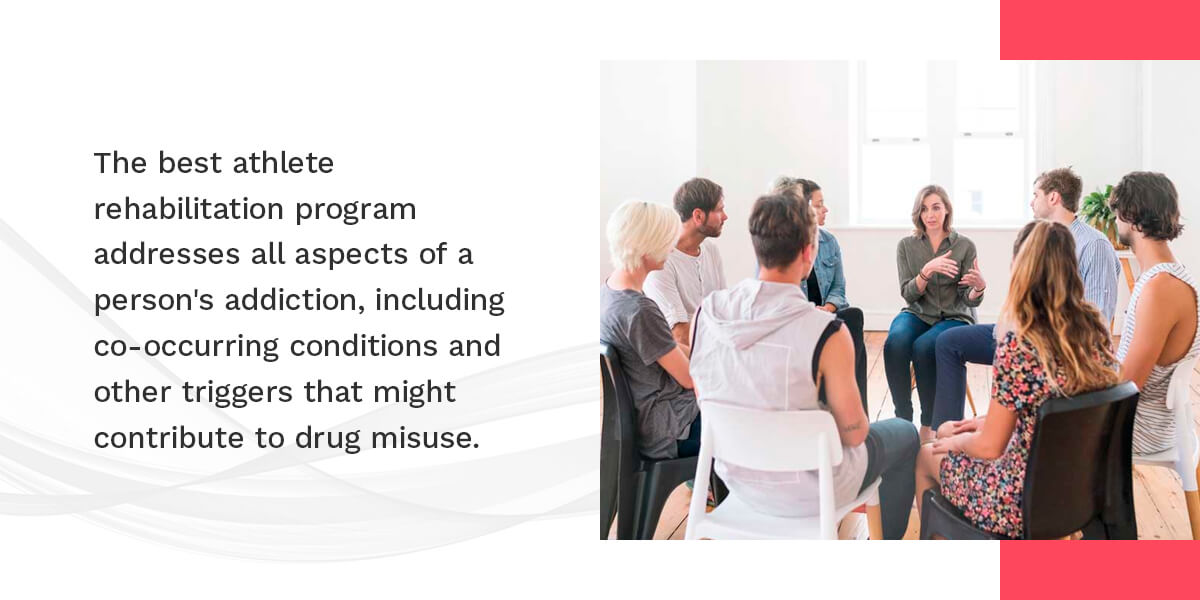Athletes demand a lot of their bodies. Whether they are involved in sports professionally or recreationally, they push themselves through training and competition. While this level of physical performance can be good for the body, athletics can also put incredible strain on people physically and mentally. Athletes can experience physical injury and endure intense pressure to maintain peak performance.
It is not uncommon for athletes to take illicit substances, whether to cope with the pain caused by an injury or to enhance performance. While addiction can be a difficult cycle to break, there are treatment options for athletes with addiction.
Risk of Addiction in Athletes
Nearly half of people 12 and older have used illicit substances at least once. Of course, illicit drugs are not the only substances that come with the risk of addiction. It’s also common to see alcohol, prescription medications and performance-enhancing drugs in sports. For instance, anabolic-androgenic steroids may boost strength and mood, which may appeal to athletes hoping to improve their performance.
Athletes might have a high risk of substance use disorder for the following reasons:
- Availability: Addictive substances may be readily accessible to athletes. For example, alcohol and binge drinking can be part of the culture for college athletes. Athletes at all levels may also have ready access to performance-enhancing drugs through fellow athletes or authority figures, such as coaches.
- Pressure: Athletes can face an enormous amount of pressure, both external and internal. For athletes who publicly compete, they may feel pressure from their teammates, coaches and fans to deliver on their performance. Internally, athletes of any level often feel the need to drive themselves to achieve their goals. If they aren’t performing as well as they think they should, they might turn to performance-enhancing drugs or use other substances, like alcohol, to cope with feelings of failure.
- Injury: Physical injury is common among athletes. Whether from overuse or an accident, athletes can break bones, tear muscles and tendons and experience head injuries. Chronic pain can lead to misusing prescription medication.
Doctors might prescribe medications like opioids to treat sports-related injuries and chronic pain. One study shows that, among the 52% of athletes prescribed opioids during their NFL career, 71% of people misused them. Athletes might feel pressured to return to the competition before their injuries are resolved, which may lead to misusing pain medications by increasing their dosage. Over time, this can lead to addiction and withdrawal symptoms when they attempt to stop.
Athletes might also seek boosted energy, endurance and focus, which may lead to misusing stimulants like amphetamines, cocaine or ephedrine.
Prescription Painkillers for Sports Injuries
Some sports injuries can resolve quickly, with no lingering effects on performance and comfort level. Other injuries can result in chronic pain. Some athletes may be prescribed medication to manage that pain. If the pain persists, they may start to self-medicate or misuse painkillers.
Common prescription painkillers for sports injuries include:
- Non-steroidal anti-inflammatory drugs (NSAIDs): You can buy several NSAIDs, such as Advil, over the counter. But there are also strong versions of NSAIDs that are only available via prescription. Celebrex and Nalfon are examples of prescription NSAIDs used for back and neck pain.
- Corticosteroids: Corticosteroids, such as cortisone and prednisone, are prescribed to address inflammation. Athletes may receive an injection of corticosteroids to treat an injury.
- Muscle relaxants: Benzodiazepines are a common type of muscle relaxant that can be prescribed to help ease pain and improve mobility in athletes. Benzodiazepines can be addictive if misused. Athletes with addiction to benzodiazepines can experience many adverse symptoms, such as poor decision-making abilities, blurred vision, confusion and slurred speech.
- Opioids: Opioids are commonly misused painkillers. In 2019, more than 10 million people misused opioids. This class of drugs, including prescription medications such as Vicodin and Oxycodone, consists of powerful painkillers. Athletes may be prescribed an opioid to manage pain following an injury or surgery.
What Are the Risks of Using Performance-Enhancing Drugs?
Performance-enhancing drugs (PEDs) are used by athletes to gain a competitive edge. Anabolic steroids and human growth hormones are considered PEDs. Natural testosterone is a steroid, though the term “anabolic steroid” is often used to describe synthetic variations of testosterone injected into the body. Most of these drugs are banned in sports, regardless of the level of competition. In addition to the possibility of disqualification, PEDs come with other risks, including:
- Physiological: PEDs affect a person’s body in many different ways. Some of the common physiological consequences of using PEDs are acne, changes in breast and testicle size, changes in sex drive, infertility, joint pain, high blood pressure and liver damage. Depending on what drugs are used and for how long, the effects may be permanent.
- Psychological: PEDs can also affect your mental health. Psychological effects of these drugs may include changes in mood, depression, impaired judgment and suicidal thoughts.
Long-term use of performance-enhancing drugs in sports can lead to irreversible physical damage like heart attacks, strokes and psychiatric problems. Many athletes who use PEDs do not consider the negative side effects of these drugs, focusing instead on the potential gains in their performance.
Warning Signs and Symptoms for Drug Use in Athletes
If you are concerned someone you know is struggling, look for the common signs of athletes with addiction:
- Changes in appearance: PEDs can significantly impact a person’s appearance. Men may develop breasts, while women begin to appear and sound more masculine. Some drugs can lead to dramatic weight gain or weight loss. Any change in appearance without explanation may indicate drug misuse.
- Sudden changes in performance levels: Many athletes improve over time with hard work and training. Sudden leaps forward in performance beyond what you might expect could be an indication that an athlete is misusing PEDs. On the other hand, an unexplained decrease in performance could mean that an athlete is struggling with an addiction to alcohol or prescription painkillers.
- Personality changes: Many addictive substances can impact a person’s mood, behavior and personality. If an athlete is struggling with sudden outbursts and bouts of irritability, these issues could be related to substance use disorder.
- GI symptoms: Many PEDs and painkillers can affect the stomach. If an athlete is exhibiting regular signs of nausea and diarrhea, substance misuse can be a possible explanation.
- Anxiety: Anxiety and substance use often go hand in hand. The drugs can make the person more anxious than normal. Additionally, the athlete who is misusing a substance may be anxious about keeping that behavior hidden from others.
Sometimes it can be hard to recognize the warning signs of addiction. It can be even harder to speak up if you do recognize the signs in a loved one or in yourself. If you suspect you or someone you know is struggling with addiction, do not ignore the symptoms. It’s best to seek help as soon as possible.
Hope for Athletes With Addiction
For some athletes, the first step toward overcoming addiction is overcoming the fear of asking for help. Many athletes with addiction may feel pressured to continue taking certain medications or experience feelings of shame that keep them from reaching out. Professional addiction rehabilitation for athletes can provide hope and a sense of belonging when you’re unsure where to turn. Addiction rehabilitation for athletes.
Athlete rehabilitation first addresses the underlying cause of drug misuse before designing an individualized treatment program for your needs and goals. Programs might include the following treatment methods:
- Medical detox to safely withdraw from substances
- Motivational interviewing to help you work through your ambivalence to change
- Behavioral therapies to identify and change harmful behaviors
- Group therapy to gain advice and feel a sense of support and belonging
- Potential medication for muscle dysmorphia
- Medications to restore hormonal balance
- Antidepressants for co-occurring conditions like depression and anxiety
- Aftercare and relapse prevention techniques, such as 12-step programs
The best athlete rehabilitation program addresses all aspects of a person’s addiction, including co-occurring conditions and other triggers that might contribute to drug misuse. This way, individuals get a more comprehensive, individualized treatment that addresses all of their unique needs.
Depending on your goals and health needs, you might benefit from an inpatient, residential program or a partial hospitalization program (PHP). Residential treatment is where you live in the treatment center and receive 24/7 assistance and supervision to help you through addiction recovery. PHP programs let you receive intensive medical care during the day and leave to be home with your support system at night.
There are also intensive outpatient programs (IOP) where you only receive treatment at certain days and times of the week that fit your schedule. The option that works for you will depend on factors like the severity of your addiction and whether you have co-occurring conditions that require more intensive care.
Reach out to Us Today
Asking for help can be hard, particularly if you are used to pushing yourself in your athletic pursuits. However, recovery is possible if you take the first steps. At Transformations by the Gulf, we take a personalized approach to addiction treatment to give every client the individual care they need. Your experience is unique, and your road to recovery will be too. You don’t have to go it alone, either — support is always available. Addiction Rehabilitation for Athletes is growing. Addiction rehabilitation for athletes.
Our team partners with you to address your needs and give you varied treatment options. We are here to help you get back on your feet and move forward with your life. If you are ready to make a change in your life, reach out to us to get started.
If you or someone you know would like to know more about Transformations by the Gulf Substance Abuse Treatment Center Give us a Call 24/7 (727)498-6498
In the client’s first 24 hours with us, we’ll evaluate their current state and work to understand what challenges they need to overcome. They’ll also have an initial session with our doctor and meet with one of our licensed mental health professionals. Addiction rehabilitation for athletes is possible!
After the initial evaluations, we’ll design a treatment plan with the sole mission of helping the client overcome and heal from addiction. Their program will focus on things such as:
- Addressing and Identifying root causes of addiction.
- Creating a support system.
- Developing healthy stress management techniques.
- Eliminating Substance use.
- Learning how to communicate emotions effectively.
- Maintaining a healthier lifestyle.
- Repairing damaged relationships.
